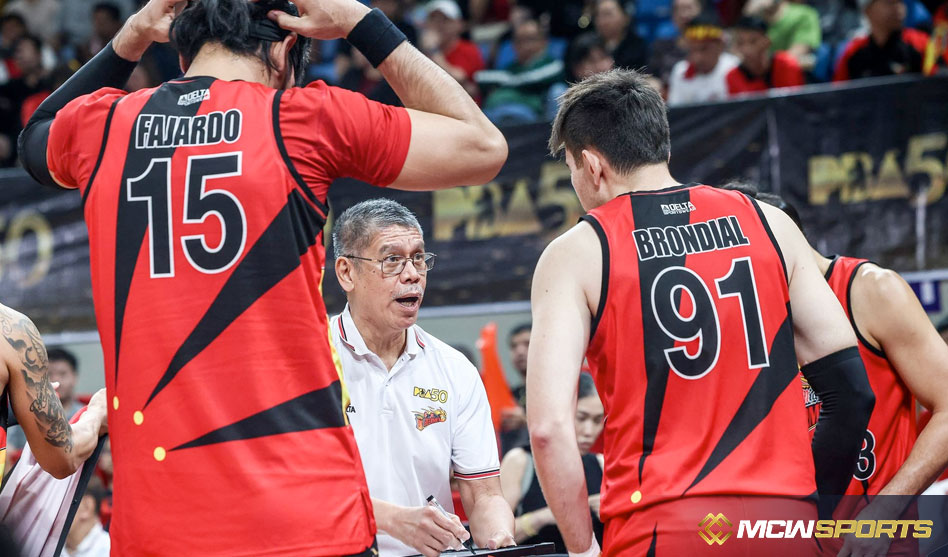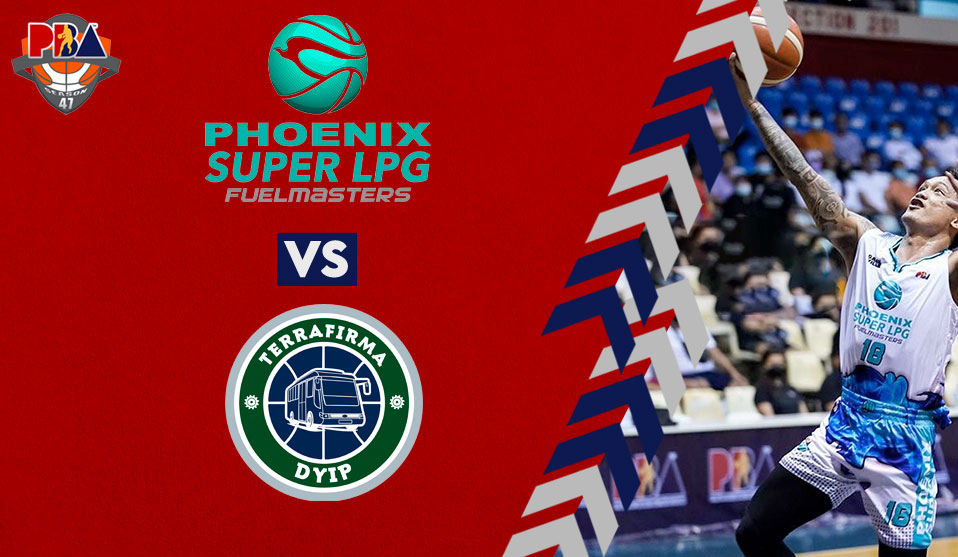Encho Serrano, a rookie in the PBA, is determined to give Phoenix a boost as he strives to prove his worth. Serrano scored 10 points for the Fuel Masters, including six in the second quarter as they drew away from Terarfirma to win the Philippine Cup with a score of 97 to 74 on Friday, June 17.
Serrano, who was projected as a first-round pick, was selected in the second round of the PBA Draft at No. 19, which has motivated the Kapampangan cager to prepare hard for the Fuel Masters.
“Iniisip ko lang, everytime na naglalaro ako, i enjoy ko lang ‘yung game,” said Serrano. “Kung ano ang dapat gawin, kung ano ‘ang maitutulong ko sa team, ‘yun lang naman.” [“I just think, every time I play, I just enjoy the game,” said Serrano. “What needs to be done, what I’m going to help the team with, that’s all.”]
“Gusto kong bumawi sa Phoenix sa tiwala na binigay nila sa akin. ‘Yun ang gusto ko na hindi sila manghihinayang na kinuha nila ako, na hindi sila magsisisi,” Serrano said. [“I want to make it up to Phoenix with the trust they gave me. ‘That’s what I want, that they don’t feel bad that they took me in, that they don’t regret it,’ Serrano said.]
He made an impressive debut against San Miguel on June 8, averaging 15 points, eight rebounds, and five assists, and he enters the game against Rain or Shine averaging 10.7 points, 4.7 rebounds, 2.0 assists, and 1.0 steals. Serrano is hoping to play on Sunday after rolling his left ankle in the fourth quarter of the Terrafirma game.
“Hindi ko alam kung sino ‘yung naapakan ko eh. Basta nung pagtalon ko, pagka-landing ko, naramdaman ko na ‘yung pain. Pero hopefully, hindi naman malala para makalaro ako sa Sunday,” said Serrano. [“I don’t know who I stepped on. When I jumped then landed, I felt the pain. But hopefully, it’s not too bad for me to play on Sunday, ”said Serrano.]
A sprained ankle is caused by rolling, twisting, or unusually turning the ankle. This can cause the ligaments that keep the ankle bones together to stretch or tear. Ligaments aid to keep joints stable and avoid excessive movement. A player may be able to resume their normal activities in a few days if they have a slight sprain. If the injured ankle is serious, they may not be able to play sports for several weeks. Serrano hopes that the sprain is not serious as he looks forward to playing only a few days after the incident.
On ankle injuries and basketball
Basketball-related ankle injury has been reported to occur at a rate ranging from 3.8 to 5.2 injuries per 1,000 athlete exposures.8,9 Ankle injury is the most common lower extremity injury, accounting for approximately 21.9 percent of all basketball-related injuries. In the NBA, ankles are the most commonly injured joint, accounting for 14.7 percent of all injuries in a typical year.3 The most common activity at the time of ankle injury is rebounding (34.4 percent of all ankle injuries), followed by general play, defending, and shooting.
Low lateral ankle sprain
The most common type of ankle sprain is lateral ankle ligament sprain, accounting for 80.2 percent of all ankle sprains among professional basketball players. Lateral ankle sprains are also much more likely to occur as a result of a contact mechanism, such as stepping on another player’s foot or making general contact with another player (71.2 percent ). Furthermore, professional basketball players under the age of 26 have a higher incidence of lateral ankle sprains than players over the age of 26. Interestingly, the prevalence of lateral ankle sprains has decreased over the last three decades while the prevalence of high ankle sprains has increased.
Medial lower ankle sprain
Medial ankle sprains are far less common than lateral sprains, accounting for only 7.8 percent of all ankle sprains in professional basketball players. Medial sprains, like lateral sprains, are more likely to be caused by a contact mechanism (63.0 percent ). Medial ankle sprains, on the other hand, were the most likely to be caused by a noncontact mechanism (37.0 percent ).
The deltoid ligament is the primary supporter of the medial ankle. Sprains of this ligament are typically caused by excessive ankle eversion and dorsiflexion. Because of the large biomechanical forces required to cause deltoid ligament damage, fibular or medial malleolus fractures may also occur, leading to a more severe injury that is difficult to recover from.
High ankle sprain
High ankle sprains are the least common type of ankle sprain among professional basketball players, accounting for only 4.1% of all sprains. When compared to medial or lateral ankle sprains, they are among the most severe ankle injuries and frequently result in more missed games and a longer time to return.
Stress Fracture
Because of the repetitive stresses of basketball, overuse injuries such as stress fractures are common. Between 2005 and 2015, 76 lower extremity bony stress injuries were identified in a study of NBA players, with 55.0 percent involving the foot and 21.1 percent involving the ankle or fibula. A stress fracture resulted in a mean of 25.1 games missed in this study, and approximately 30% of athletes were unable to return to their pre-injury level of play.23 While stress fractures in the ankle and foot are less common than other musculoskeletal injuries, they can be debilitating injuries that linger for weeks to months if not properly managed and rehabilitated.
Overuse of the foot and ankle caused by frequent, repetitive motions such as running, jumping, cutting, or pivoting causes inflammation and microscopic trauma that progresses to a small fracture over time. The navicular bone, talus, and lower tibia and fibula are the most commonly fractured bones in the ankle.


 English
English









